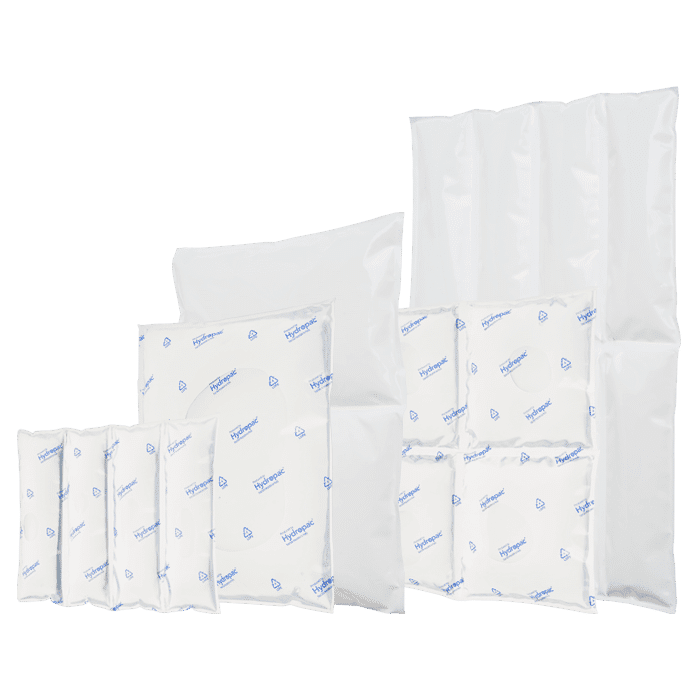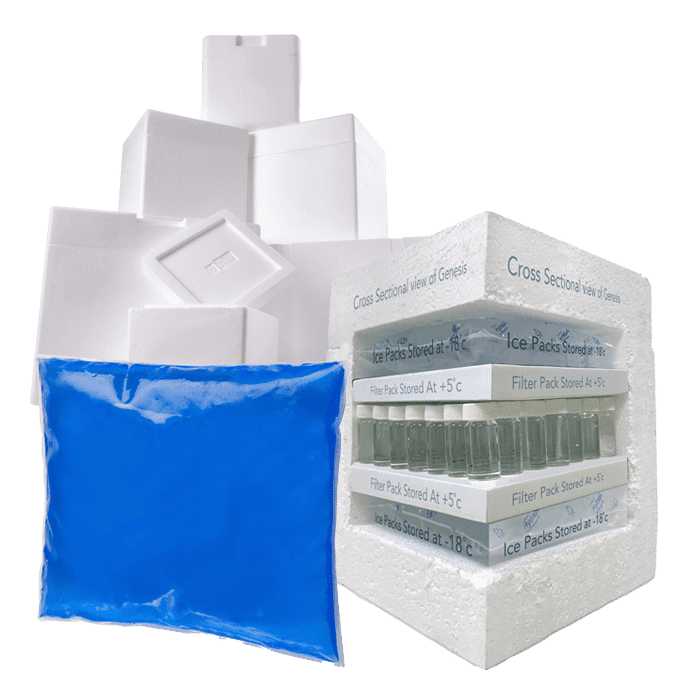The environmental impact of traditional dry ice
We are very proud of our HydroFreeze and HydroFreeze+ ice packs as they are such a good alternative to dry ice, however you may not understand the full reasons why we are so keen to ensure that these take prominence in our ice pack range.
We have discussed before the implications of using dry ice, for the sender, the shipping company and the end recipient. It can cause chemical dry ice burns, it needs to be handled and discarded correctly, and using it can also prove costly as it requires specialist shipping considerations. Carriers do tend to pass this cost down to the sender. One thing that also needs to be considered are the environmental implications of using dry ice.
Source: https://hydropac.co.uk/hydrofreeze-icepacks-v-dry-ice-for-shipping/
Custom chilled solutions for you
Hydropac offers every customer a customized solution for chilled and conditioned shipping. For example, we help a customer with limited freezing capacity to deliver gel packs frozen and ready to use, and we can manufacture almost all shapes and sizes of cooling elements. As a customer, you come first: we are here to help you.
Dry ice and the environment
Dry ice itself is not toxic and not harmful overly to the environment in everyday life. That said, it does still have an impact on the environment in its creation and subsequent disposal, which is why it must be handled – and disposed of – correctly.
What is “Dry Ice?”
“Dry ice” is actually solidified carbon dioxide. It is created by liquefying carbon dioxide; this is then injected into a holding tank and frozen at an extremely low temperature of –78°C / 109°F. it is then compressed into solid ice and cut into desired shapes, such as large blocks or pellets.
The creation and subsequent storing process of dry ice demands a lot of energy, and the majority of commercial freezing units will rely on traditional power sources and the main electricity grid to keep dry ice frozen until it is needed. This energy production and usage has knock on effects on the environment, including but not limited to:
- Land use for power lines, power generation, fuel production and transmission.
- Thermal pollution into water, where water is introduced that is hotter than the original temp of the body of water it is going into.
- Water usage to produce steam and cooling facilities.
- Air pollutants and emissions of greenhouse gases.
Whilst alternative products such as HydroFreeze/HydroFreeze+ do require the use of a freezer, they do not require such extreme low temps as traditional dry ice and far less energy usage in this regard. Both phase change at -20°C/-4°F, a far cry from –78°C / 109°F!
Using Dry Ice
As dry ice melts, it turns into carbon dioxide gas (a process known as “sublimation”) – this is always present in low concentrations in the environment so does not contribute to the greenhouse effect. However, it can pose a problem when it is released in a small or unventilated space, as it lowers the amount of “normal air” in the area. This in turn creates an oxygen deficient environment which can pose the following health risks to both humans and animals:
- Weakness
- Impaired mental function including thinking, attention span, coordination and emotional upset.
- When oxygen levels become even lower, bodily functions such as heart function and abnormal fatigue are a risk.
As carbon dioxide gas is both colourless and odourless, it cannot be detected unless a specific alarm sensor is in situ – so if dry ice melts in uncontrolled conditions and in an unventilated space, anyone or any animal in the immediate area could be at real risk to their health. If the oxygen in the area reduces to any less than 10%, unconsciousness without warning is a real risk. Once this has happened, the individual may then suffer convulsions and eventually these conditions will be fatal if no help comes.
With HydroFreeze and HydroFreeze+, there are no such risks. The formula inside these ice packs melts back into its liquid form and can be poured safely away down any drain. It is made up of natural ingredients which do not harm the environment and do not pose any risk to health.
Disposing of Dry Ice
There are a number of reasons why dry ice needs to be disposed of correctly, even though in itself it is not toxic. These include:
- It is dangerous to any human or animal that touches it in its frozen form, as it causes cold burns. There have been cases of domestic end users leaving dry ice unattended and pets licking it, resulting in facial or paw burns.
- The same for children who may not understand the risks.
- In addition, as above, as dry ice melts it releases carbon dioxide gas which can be fatal if a human or animal is nearby in an unventilated space.
- If dry ice is ingested, it could cause health issues include:
- Swelling in the stomach due to excess carbon dioxide
- Damage or inflammation to the oesophagus
As a comparison HydroFreeze and HydroFreeze+ are made from a unique, food safe formula that is not classed as “Hazardous Goods” like dry ice is. This is made up of ONLY natural, food approved ingredients that can be found in normal, everyday life and do not require specialist handling of any type. If an animal or child accidentally touches or ingests them, they will not suffer any long lasting damage or illness, although we do not recommend that they are ingested.
HydroFreeze™ products can be safely disposed of down the sink and flushed away with running water and the emptied plastic pouches can be recycled with other plastics.
Conclusion
Whilst dry ice is not classed as “environmentally damaging”, it is a hazardous substance because of the risks it poses to health as it melts if the conditions are not optimal. In addition, the energy that goes into creating and freezing dry ice at extreme temperatures until it is required also add drains to our environment.
In comparison, our safe alternatives to dry ice, HydroFreeze and HydroFreeze+, do not a) pose any risks to health and b) do not require any extreme energy consumption to remain frozen. This makes them both a safer and more environmentally friendly solution all round!
HydroFreeze/HydroFreeze+ ice packs are available in Freezer Trays and Courier Boxes.
Sustainability Hydropac and CSR
Sustainability isn’t just a trend for us – it’s a promise. As we innovate, create, and lead, we keep our planet’s well-being at the forefront. With Hydropac, you’re not just preserving the quality of your cargo; you’re contributing to a healthier world.
Experience the power of sustainable temperature assurance with Hydropac – where excellence and environmental responsibility coexist for a brighter future.







